Drywells and Detention Basins
Purpose: Drywells collect and infiltrate runoff at gutter downspouts, and detention basins work great where large quantities of concentrated water flow off rooftops. These systems help control erosive runoff on your property, and reduce wear on your house by minimizing back splash.
Note: AWWA typically refers to these BMPs as dry wells when they are constructed with crushed stone. When they are made with rip rap (large angular stones 8-12″), AWWA refers to them as detention basins. Detention basins have a greater holding capacity and can be large depending on the volume of water that needs to be contained.
Tip: Install a drywell or a detention basin at the end of a rubber razor or waterbar. Water flowing off of these other BMPs will be trapped where it can absorb into the ground without causing erosion. See the example photos below.
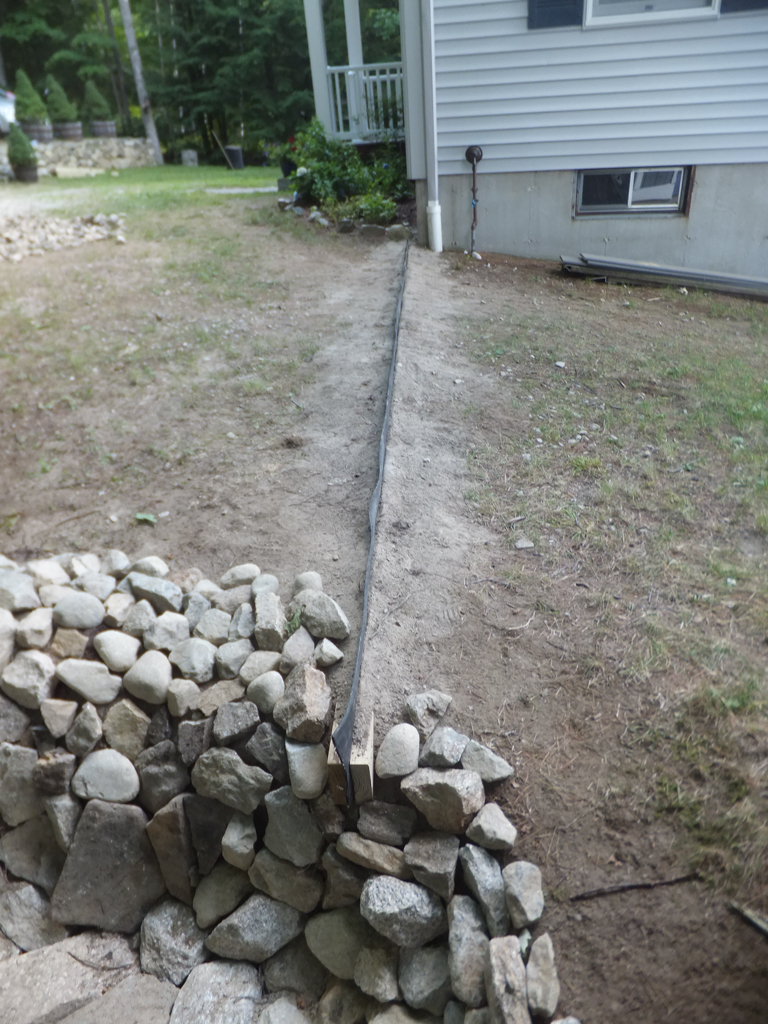
Installation: Drywells or detention basins should measure about 3’ x 3’ x 3’, be lined with non-woven geotextile fabric and back-filled with 1/2” to 1½” crushed stone. Slope the bottom away from the house so that water does not drain towards the foundation. Make sure to dispose of the removed soil in areas where it will not wash into the lake. Extend the life of the dry well by lining the sides with non-woven geotextile fabric and filling to within 3” of the ground level with stone. Fold a flap of filter fabric over the top of the BMP and top off with additional stone.

Note: These BMPs work best in sand and gravelly soils that can quickly disperse a large volume of water. They should not be used on structures with improperly sealed foundations, as flooding may result. If flooding is of concern, place the BMP 6’ away from the base of the foundation.
Materials: Crushed stone and rip rap can be purchased at your local gravel pit. Contact your local Soil and Water Conservation District for suppliers of non-woven geotextile fabric. Other geotextiles, including landscaping weed barrier, can be substituted for smaller projects.
Maintenance: To maintain these structures, periodically remove accumulated debris and weeds from the surface. Non-woven geotextile fabric will extend the life of these structures, however, they will eventually clog over time and the stone will need to be removed and washed to clean out the accumulated sediment and debris.
Examples

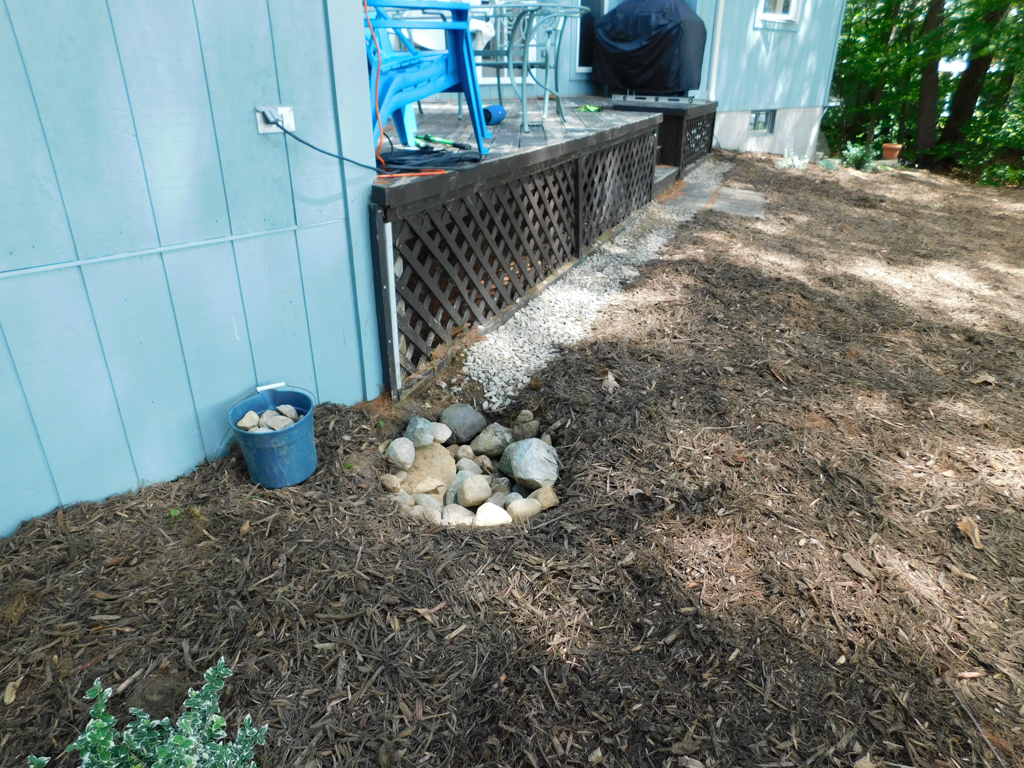
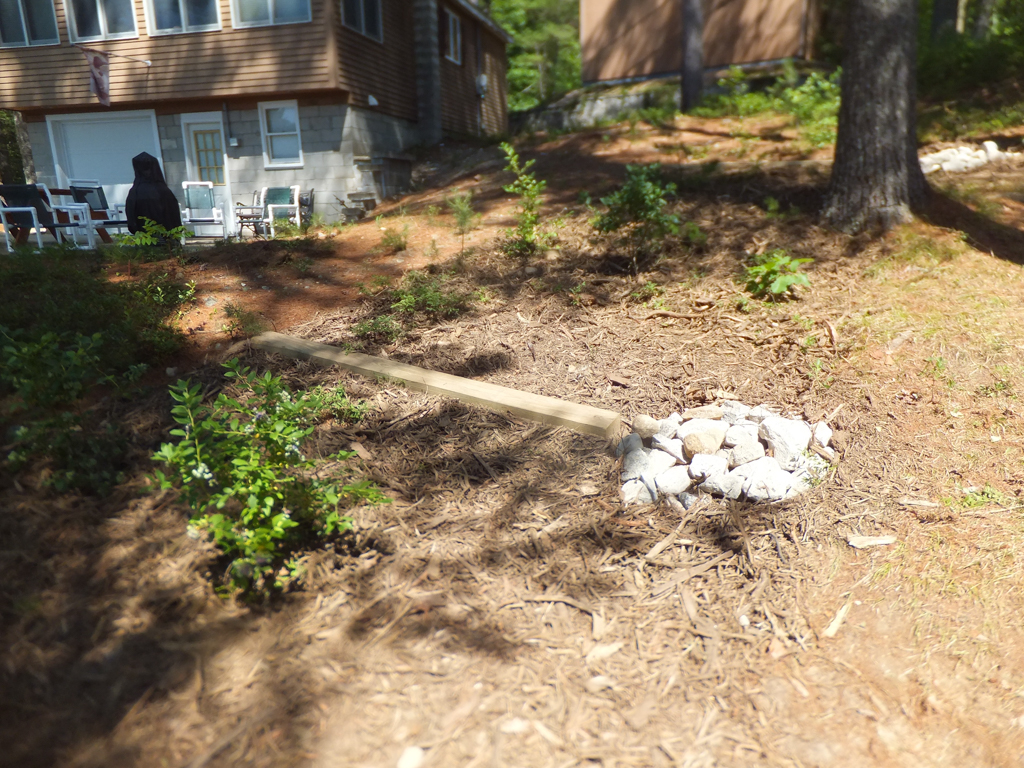
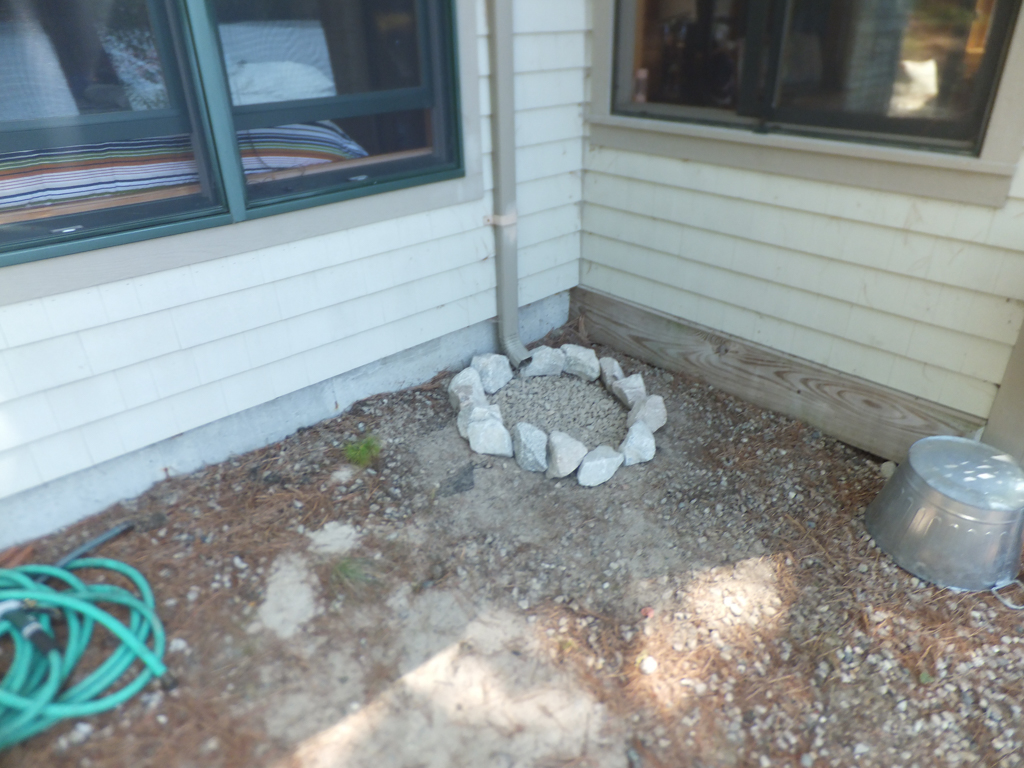
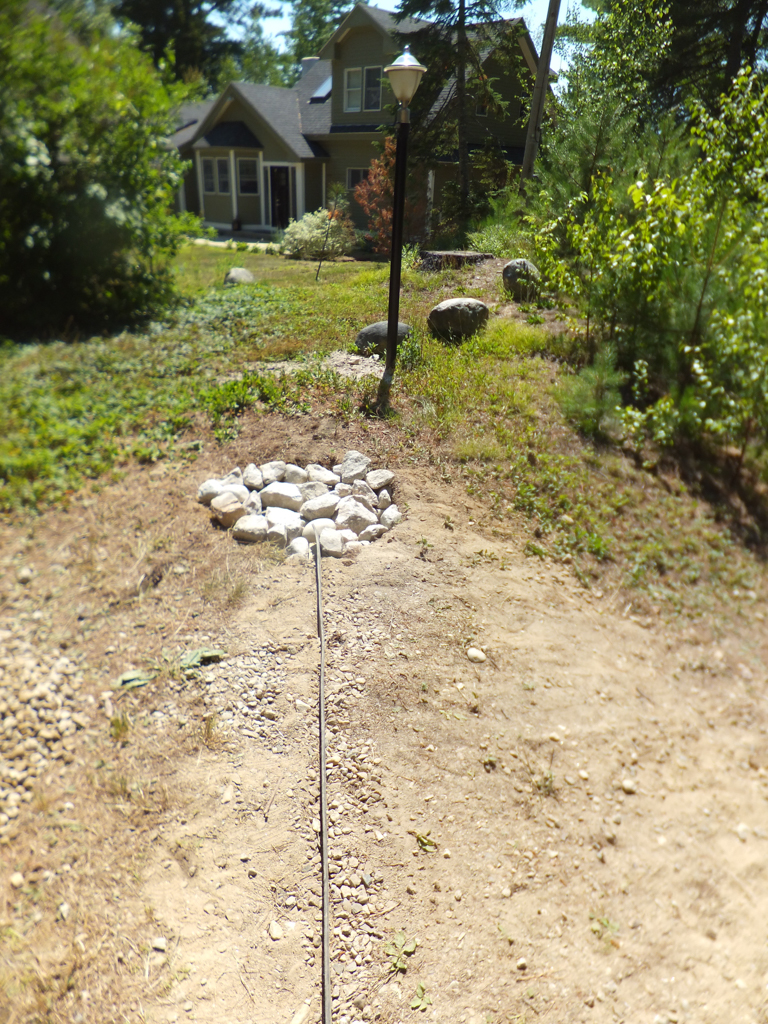
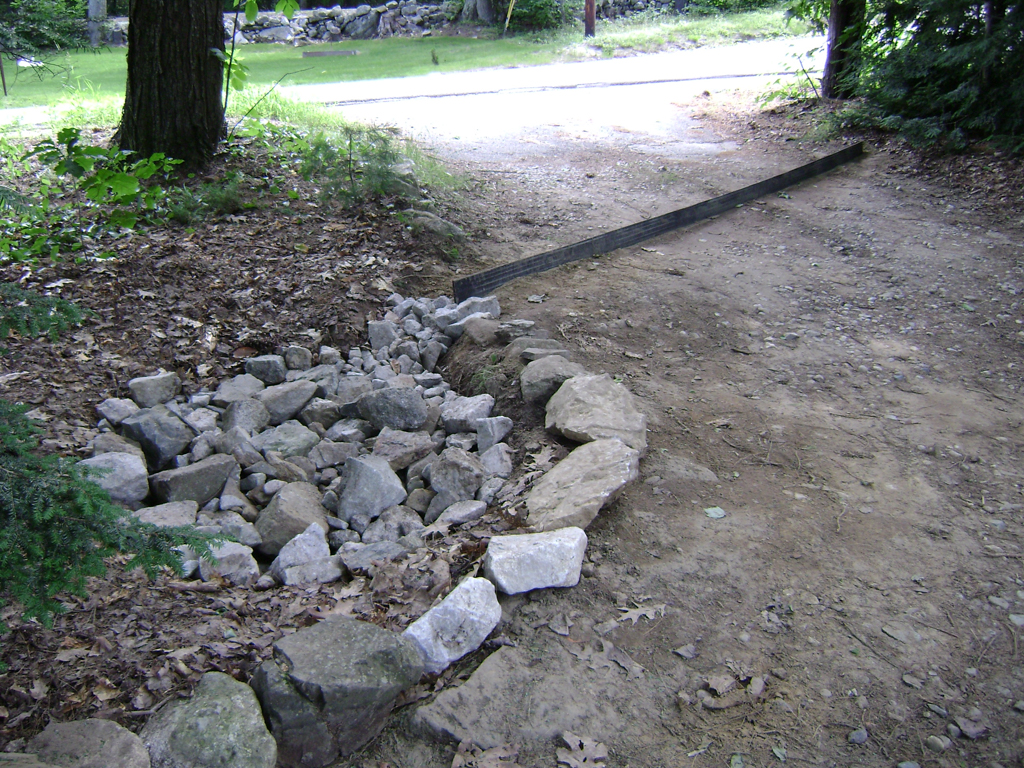
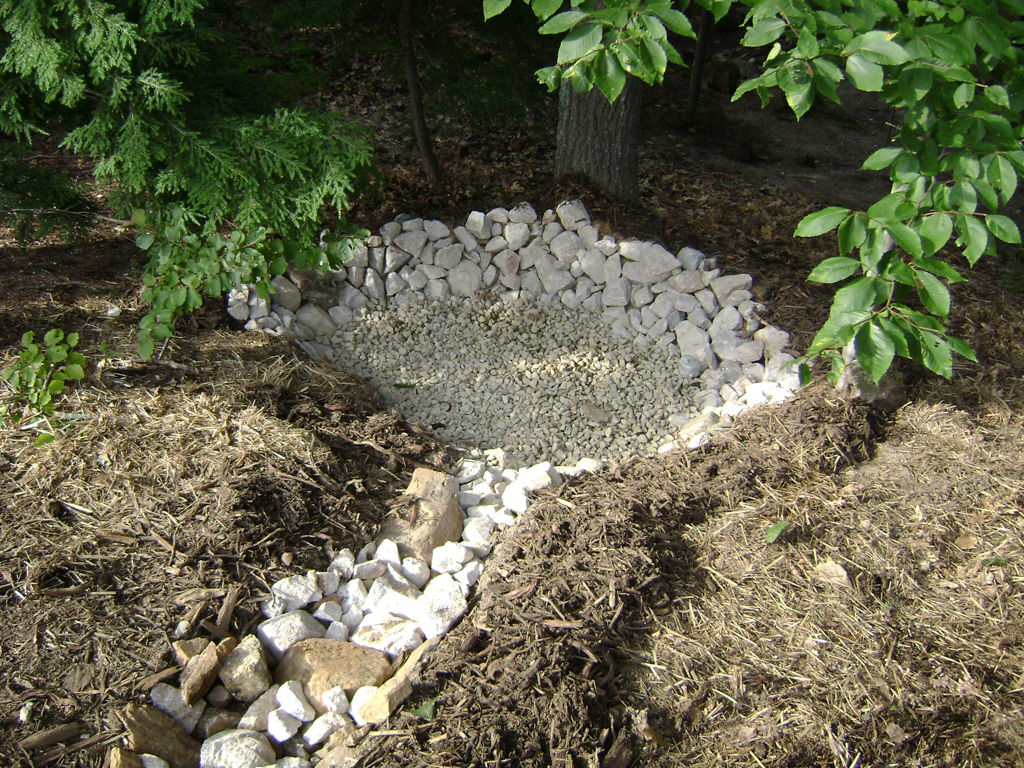
The Conservation Practices for Homeowners Factsheet Series are available at: Maine DEP or the Portland Water District. You can also find fact sheets at SOAK up the Rain NH.

